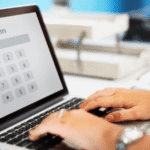When users search for eena login, they want clear guidance on what it is, how to access it, and the role it plays in digital platforms. In simple terms, eena login refers to a secure gateway that allows registered individuals or organizations to access a platform’s features, manage data, and perform tasks according to their assigned credentials. Unlike basic sign-in systems, eena login is designed with layered authentication, streamlined dashboards, and user-centric controls that make it both reliable and efficient. Within the first step of interaction, it answers two critical needs: user identity verification and permission-based access. This is particularly valuable for enterprises, schools, and service providers who rely on seamless digital connectivity without compromising security.
Over the past decade, login systems like eena have become more than a username-password combination; they are the entry points to entire ecosystems of collaboration, analytics, and digital service management. In fact, the demand for secure and intuitive login structures has grown with the expansion of cloud platforms and remote working models. As one technology consultant once noted, “Your login is no longer just a door—it is the key to trust, safety, and productivity.”
This article explores the full depth of eena login, including its origins, design philosophy, features, technical layers, use cases, and user support mechanisms. By the end, readers will not only understand how to use it but also why it has become an essential part of modern digital infrastructure.
The Concept of Eena Login
The idea of eena login emerged from the need for streamlined authentication processes that balance user convenience with enterprise-grade security. At its core, it is a centralized access mechanism that integrates multiple modules under one roof. Instead of requiring users to maintain multiple passwords or visit multiple portals, eena login consolidates access into a single, reliable entry point.
Unlike generic login systems, eena login introduces adaptive authentication. This means it can adjust verification requirements depending on the sensitivity of data being accessed. For instance, logging into a general dashboard may only require credentials, while accessing confidential reports could trigger a second factor such as biometric validation. This flexibility positions it as a versatile tool for both casual users and high-security operations.
The system was designed to reduce redundancy, improve productivity, and most importantly, reinforce digital identity management. In the words of one IT administrator, “Eena login does not simply allow entry—it ensures the right person is in the right place at the right time.”
Key Features of Eena Login
To fully grasp its importance, one must look at the defining features of eena login. These features are not accidental; they are built to address modern challenges like password fatigue, phishing, and unauthorized access.
| Feature | Description | Benefit |
|---|---|---|
| Single Sign-On (SSO) | One login for multiple services | Saves time, improves efficiency |
| Multi-Factor Authentication (MFA) | Additional verification methods | Enhances security |
| Adaptive Access | Context-aware login requirements | Balances convenience with risk level |
| Role-Based Access Control | Permissions tied to user roles | Reduces errors, ensures compliance |
| Real-Time Monitoring | Tracks login activity | Detects anomalies instantly |
These features, when combined, create a login ecosystem that is both practical and protective. It is the balance of these two qualities that makes eena login stand out compared to conventional access systems.
The Step-by-Step Login Process
Understanding the actual login sequence provides clarity to new users. The process is designed to be intuitive yet thorough.
- Visit the Portal – Navigate to the official eena login page.
- Enter Credentials – Input registered username and password.
- Secondary Verification (if enabled) – Provide OTP, biometric, or token confirmation.
- Dashboard Access – After verification, the dashboard loads based on user role.
- Session Security – System ensures automatic logout after inactivity.
| Step | Action | Security Layer |
|---|---|---|
| 1 | Portal entry | HTTPS encryption |
| 2 | Credential input | Encrypted password storage |
| 3 | Verification | Multi-factor or adaptive check |
| 4 | Dashboard access | Role-based control |
| 5 | Logout policy | Auto-termination |
This structured journey ensures that security and usability work in tandem rather than against each other.
Applications of Eena Login
The applications of eena login extend beyond a single sector. It is widely used in multiple fields where controlled access is essential.
- Education: Schools and universities use it for student portals, course registration, and exam management.
- Healthcare: Hospitals employ it to ensure that only authorized staff can access patient records.
- Corporate Enterprises: Businesses rely on it to centralize HR systems, payroll, and collaboration tools.
- Government Platforms: Secure portals for e-governance use eena login to verify citizen access.
- Nonprofits and NGOs: Organizations streamline project management and donor databases with this login system.
By adapting to different contexts, eena login showcases its flexibility as a universal digital access solution.
Security Framework Behind Eena Login
Security is not a secondary layer in eena login—it is the foundation. Every login request undergoes encryption to prevent interception. Databases do not store raw passwords but use hashing mechanisms with salting to make decryption nearly impossible. Furthermore, adaptive AI-driven anomaly detection monitors unusual login attempts.
For instance, if a user logs in from two continents within the same hour, the system raises alerts or requires additional verification. Such intelligent checks prevent identity theft while maintaining the fluidity of access. Regular penetration tests, compliance audits, and update cycles further strengthen the framework.
As one cybersecurity specialist remarked, “In the age of digital vulnerabilities, eena login stands as a layered defense rather than a fragile door.”
Benefits for Organizations and Users
The introduction of eena login offers measurable benefits:
- Streamlined Access: Reduces wasted time in juggling multiple accounts.
- Stronger Security: Multi-layered protection shields against breaches.
- Cost Savings: Lower IT helpdesk costs due to reduced password reset requests.
- Better User Experience: A smoother login flow encourages platform engagement.
- Scalability: Easily adapts as organizations grow or integrate new systems.
For users, the primary attraction is simplicity. For organizations, the key takeaway is security. This dual appeal ensures adoption across industries.
Troubleshooting Common Login Issues
Despite its robustness, users may encounter login challenges. Typical issues include forgotten credentials, browser cache conflicts, or network disruptions. Eena login addresses these through user-friendly recovery systems and detailed helpdesk support.
- Password Reset: A step-by-step recovery link sent to registered email.
- Cache Problems: Clearing cookies often resolves session mismatches.
- Network Errors: Secure connections are required; public Wi-Fi is discouraged.
- Locked Accounts: After multiple failed attempts, accounts are locked to prevent brute force.
These built-in solutions make troubleshooting less intimidating for average users while ensuring strict protection policies remain intact.
Future of Eena Login
Looking ahead, eena login is likely to evolve further. Artificial intelligence integration will enhance anomaly detection, while biometric adoption will reduce dependency on passwords. Blockchain-based identity verification may also enter the picture, giving users more ownership of their digital credentials.
The future direction of eena login reflects broader digital trends: decentralization, personalization, and stronger trust mechanisms. With rapid technological changes, it is expected to stay a step ahead in balancing user convenience with ever-rising security needs.
Conclusion
Eena login’s not merely a tool for accessing accounts; it is the architecture of trust in digital ecosystems. From education to healthcare and corporate sectors, it provides a secure, adaptable, and user-friendly solution to one of the most fundamental challenges of the digital age: identity verification. Its layered features such as SSO, MFA, adaptive access, and real-time monitoring represent a future-ready approach that combines efficiency with safety.
The significance of eena logins lies in its ability to empower users and organizations simultaneously. While users enjoy simplicity, organizations benefit from reduced risks and improved compliance. As one digital strategist summarized, “A platform is only as strong as its login, and eena logins proves that strength can be simple.”
In an era where trust defines digital success, eena logins stands as a cornerstone of modern connectivity. Its presence today is strong, and its role in shaping tomorrow’s digital identity management appears even stronger.
FAQs
Q1. What is eena login used for?
It is used for secure, centralized access to digital platforms with single sign-on, role control, and multi-layer authentication.
Q2. How does eena logins improve security?
It employs multi-factor authentication, adaptive checks, and real-time monitoring to prevent unauthorized access.
Q3. Can eena logins be used in schools?
Yes, it is widely implemented in education systems for student, teacher, and administrative access.
Q4. What if I forget my eena login password?
A password recovery link is sent to your registered email, ensuring a secure and quick reset process.
Q5. Is eena login compatible with mobile devices?
Yes, the system is optimized for desktops, tablets, and smartphones for convenient on-the-go access.











